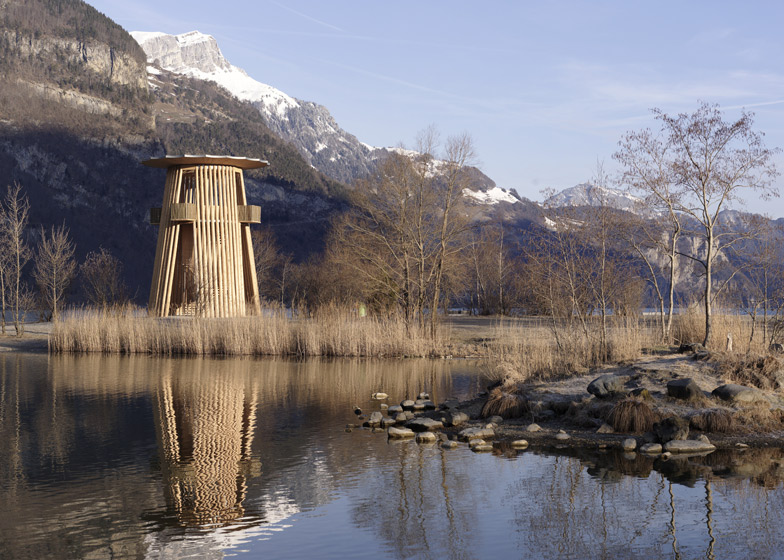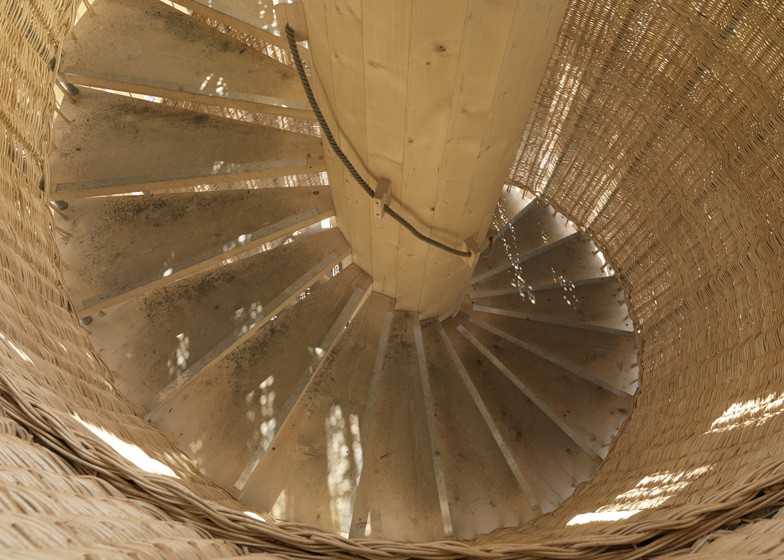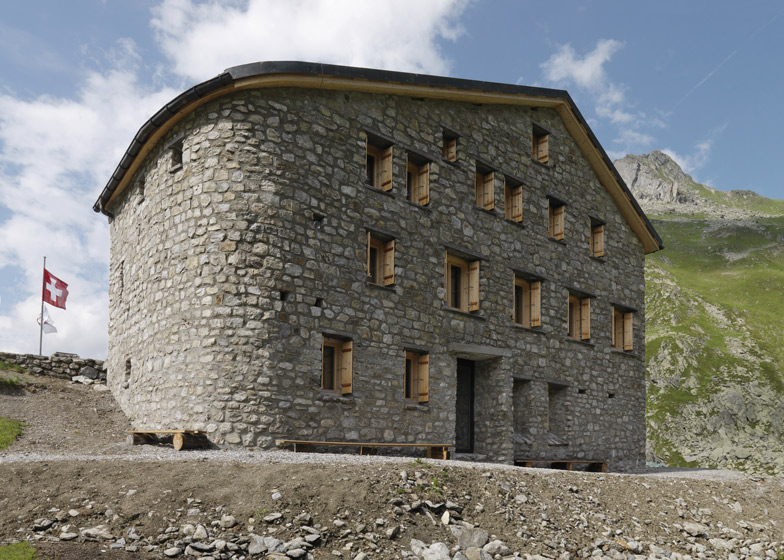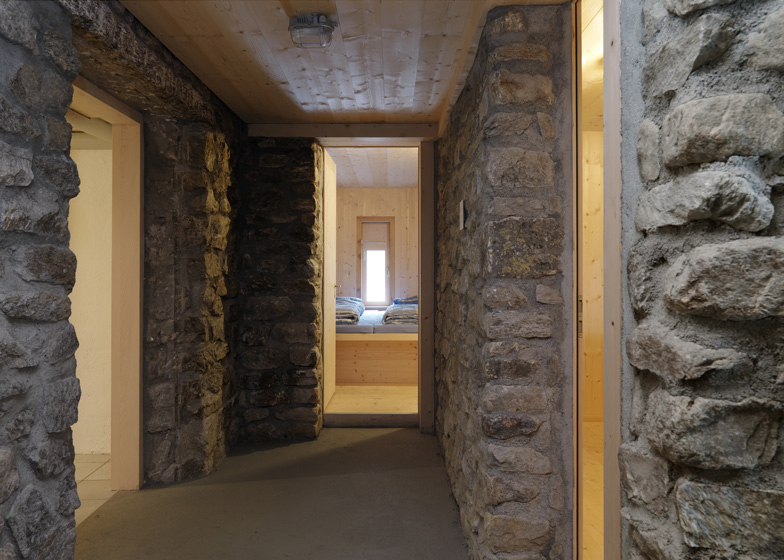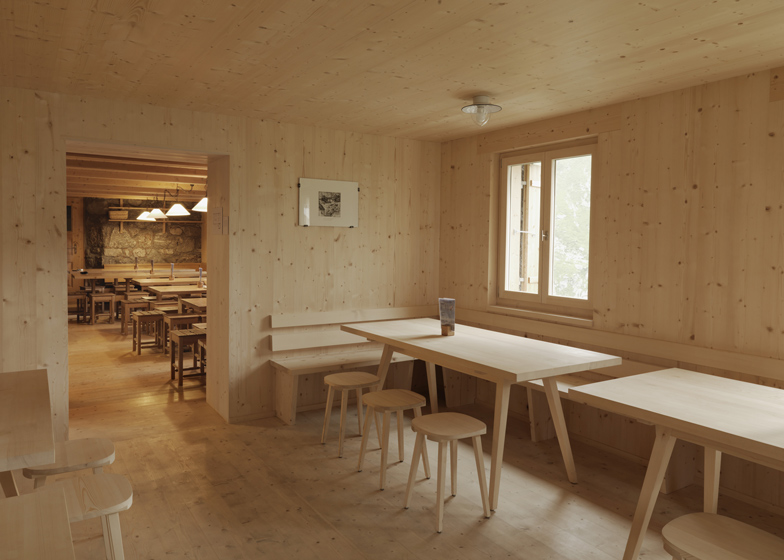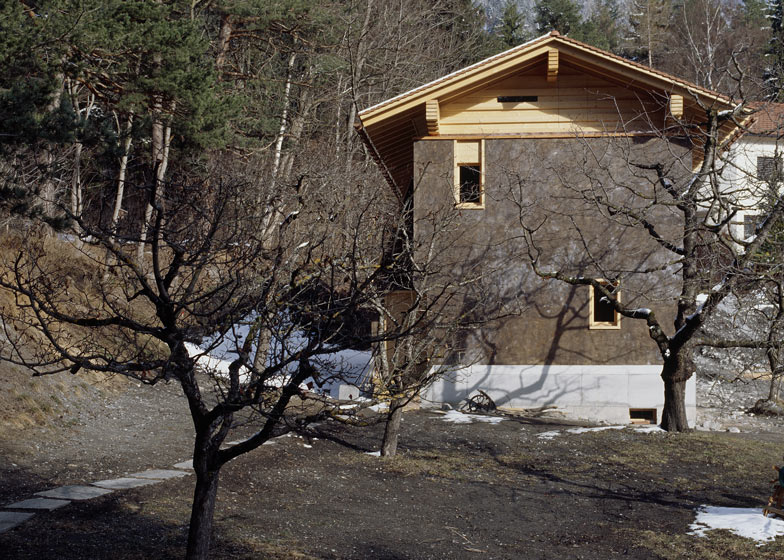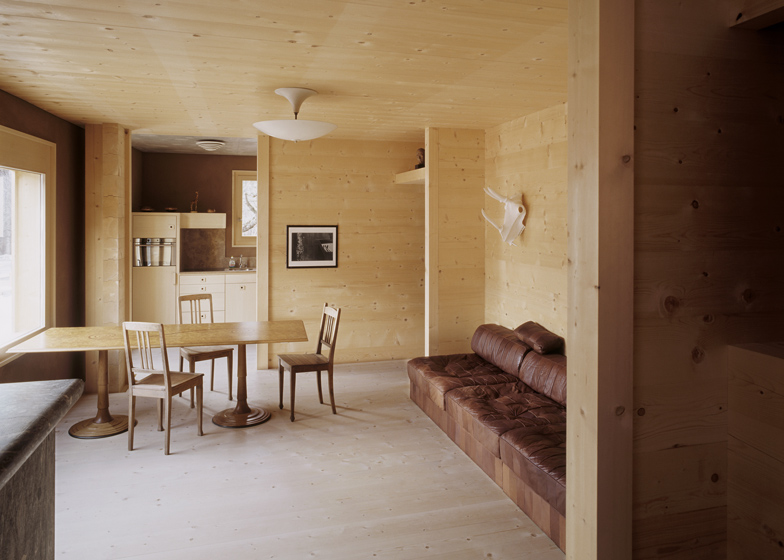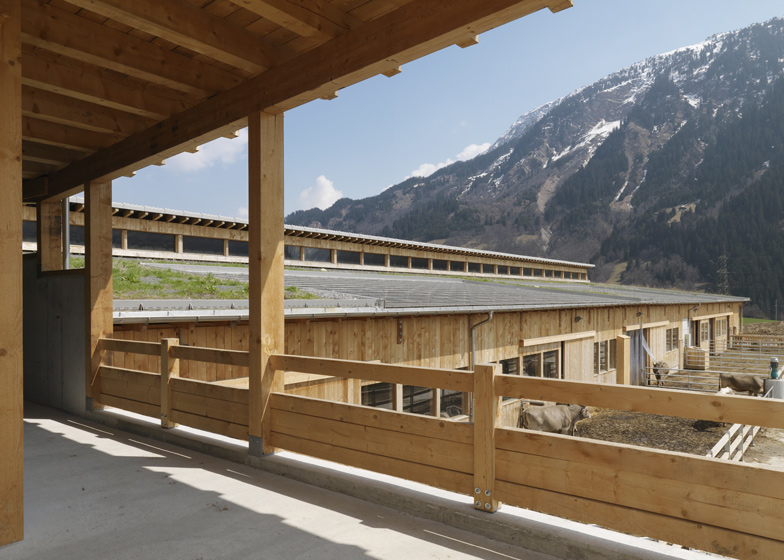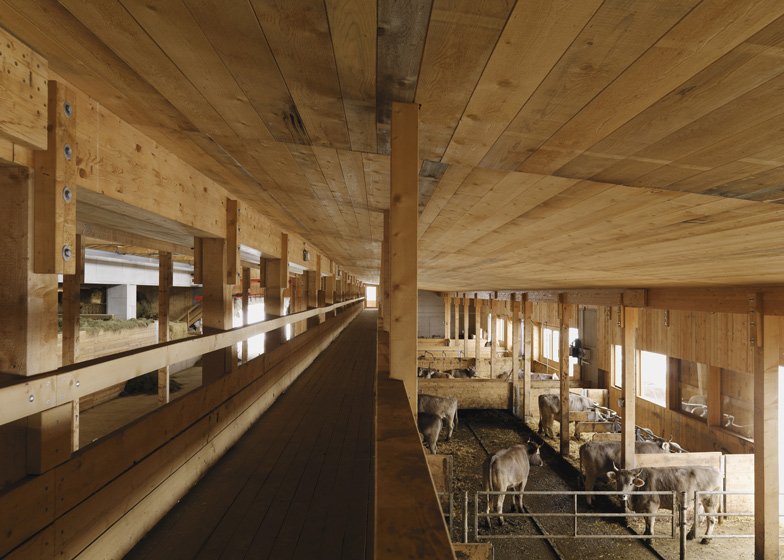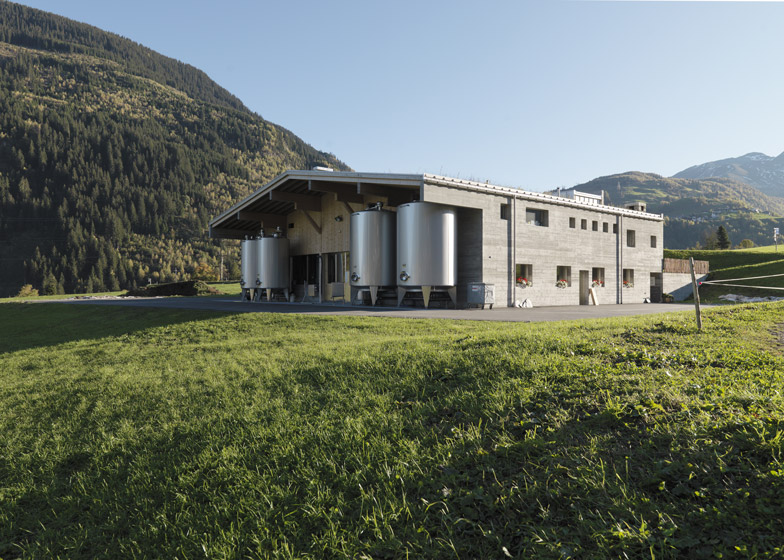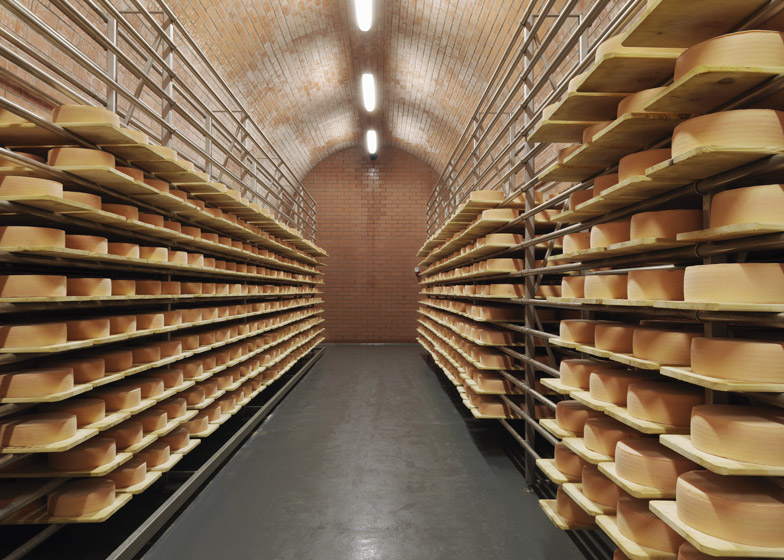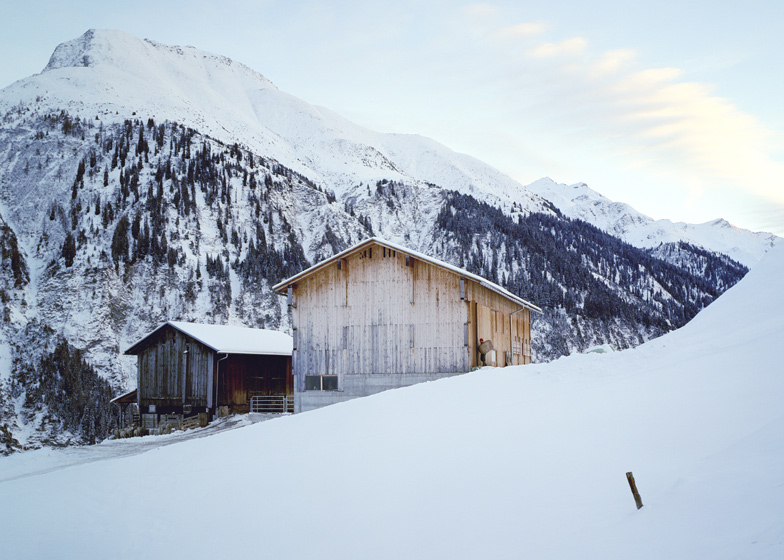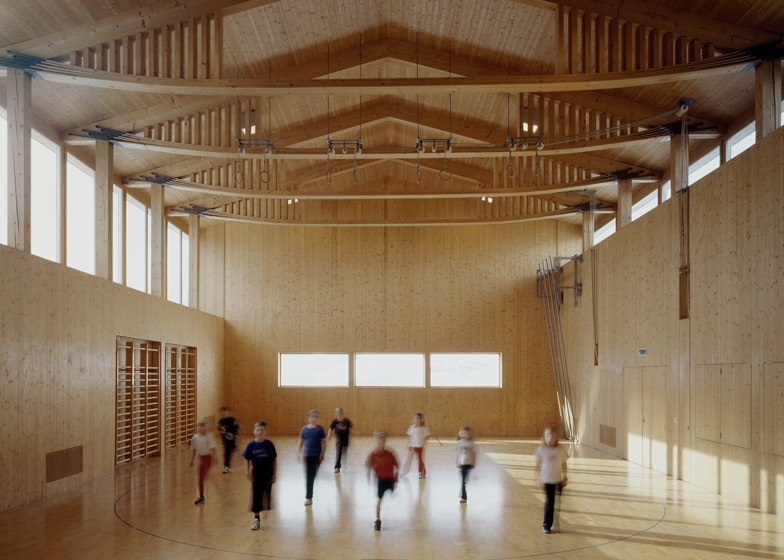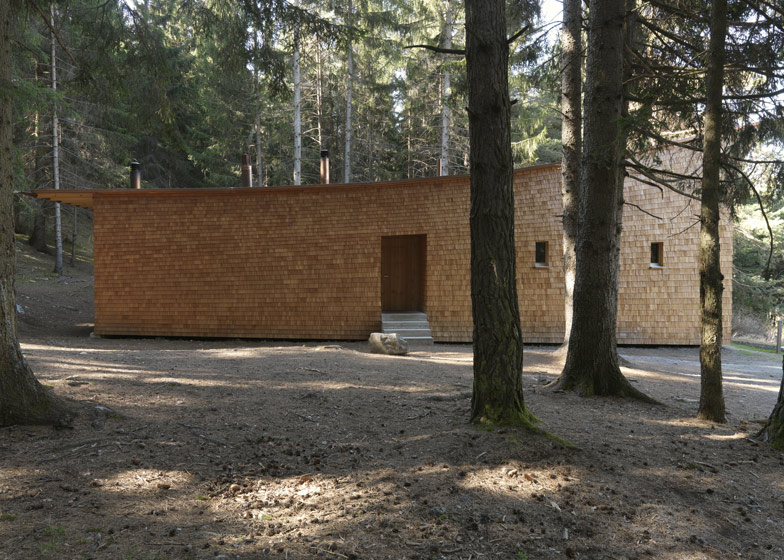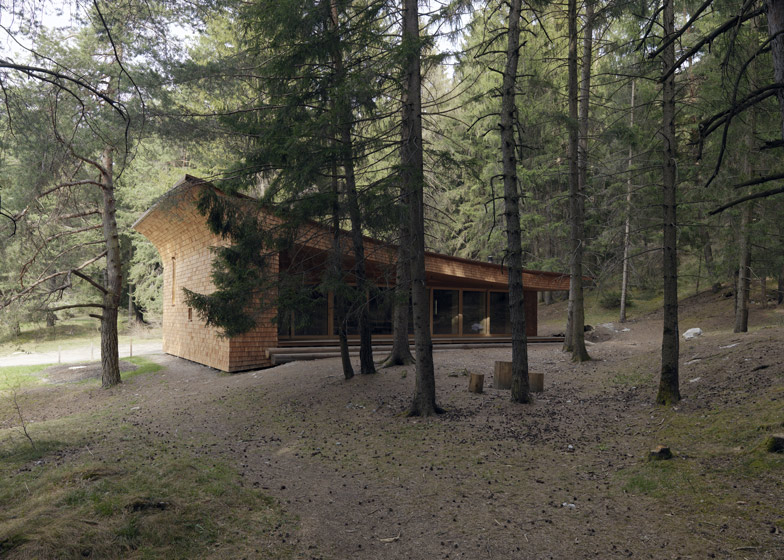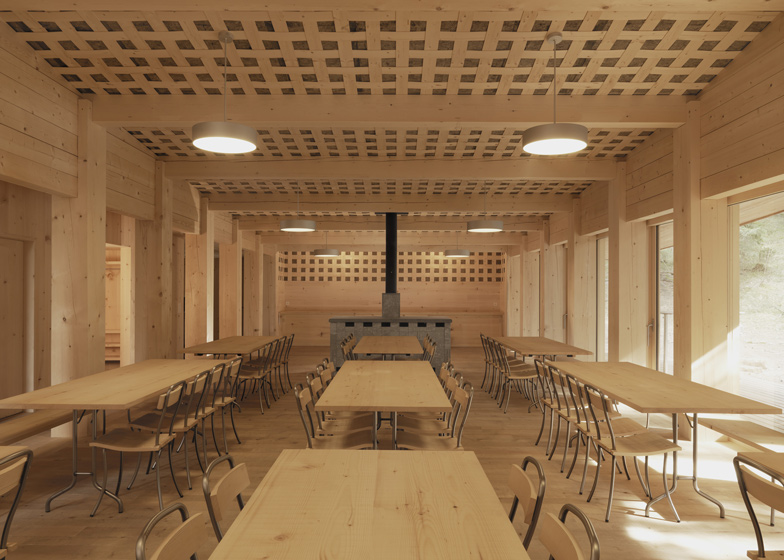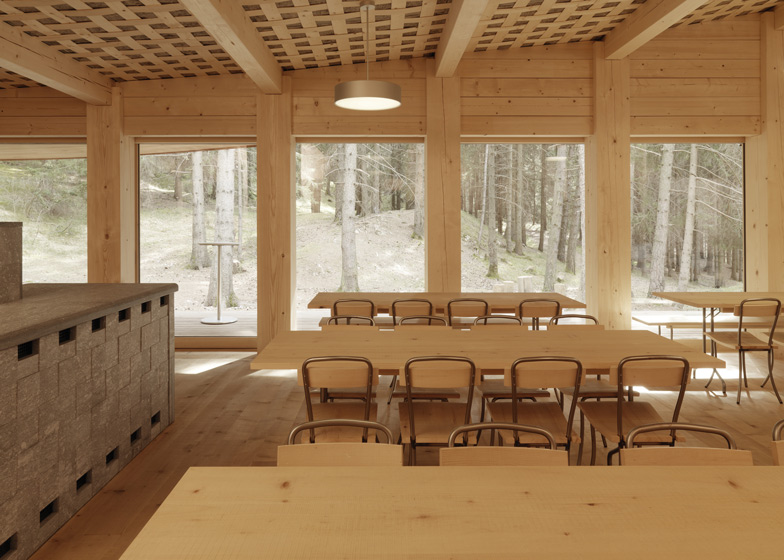The timber and stone buildings of Gion A Caminada, a cult figure in Swiss architecture, will feature in an exhibition opening next month at the House of Art in the Czech city of České Budějovice (+ slideshow).
Hailing from Graubünden, the same Swiss canton as fellow architect Peter Zumthor, Gion A Caminada has built little outside of his native region and instead focussed much of his life's work on the village of Vrin, where he established his studio in the late 1970s.
Both the population and the economy of the village were in serious decline, so Caminada set about providing infrastructure that would help it to thrive again. These projects include the Klosterhof Salaplauna farming facility and the Mehrzweckhalle public sports hall.
Initally trained as a carpenter and cabinet-maker, the architect also designed a series of houses aimed at combining traditional constructions with modern detailing. Examples of these include Haus Walpen in Blatten, Haus Caviezel in Vrin and his own home, Haus Caminada.
The exhibition, entitled Creating Places, will offer a retrospective of Caminada's career to date, compiled by the architect alongside curator Michal Škoda.
"The aspect of my architecture that I am interested in is the discussion with the local tradition," said Caminada, who currently works as an architecture professor at ETH Zurich.
"I pose a question to myself what those old architectural systems may give us," he continued. "Where is the substance of those constructions? How can they be transformed for new kinds of use to meet the requirements of the present time?"
Other projects featured will include Aussichtsturm Reussdelta – an observation tower for ornithologists – and Waldhuette, a school classroom contained within a woodland cabin.
The exhibition opens at the House of Art's contemporary art and architecture gallery on 7 May and will run until 15 June.
Photography is by Lucia Degonda.
Here's some more information about the exhibition:
Gion A Caminada – Creating Places
"The aspect of my architecture that I am interested in is the discussion with the local tradition. I pose a question to myself what those old architectural systems may give us. Where is the substance of those constructions? How can they be transformed for the new kinds use to meet the requirements of the present time? It is always the matter of discussion and a new development. I believe that it is the core of tradition of the entire village."
These are the words of the Swiss architect Gion A Caminada, whose exhibition was prepared by the Gallery of Contemporary Art and Architecture of the House of Art in České Budějovice for May and June this year.
In the late 1970s, Caminada appeared with a project of improving the development and functioning of the village. And Vrin became the place that Caminada focused a major part of his lifelong effort on. Nowadays, with the benefit of hindsight, we can state that certain ideas and proposals of Caminada's have not remained at the level of considerations only, which is proved by an essential change on the place mentioned.
Vrin, a village that was dying, both in terms of population and economy, started to change in a number of respects. People stopped moving away, and a number of communal and private buildings, as well as modern farming constructions enabling a contemporary manner of cultivating land, were built. All of this was achieved without a conflict with the traditional nature of the village. Traditions and the cultural heritage were linked with new, up-to-date needs. Another proof of the well-chosen way is that Vrin was the first village to be awarded the Wakker Prize of the Swiss Heritage Society.
In Caminada's work, architecture also plays a social role. It is happy and beautiful only if the tension between tradition and modern ways bring attractive solutions and if its function is linked with a way of life.
Caminada based his work on the presumption that houses have to reflect people's stories, and that architecture is an interdisciplinary field, while technology is merely its complement. He uses contemporary means to imprint a traditional appearance to the Alpine environment. However, at the same time, he admits that architecture is becoming a political issue to an increasing degree. The designer has to overcome a number of obstacles related to politics. This is what he partly views as the weak point of contemporary architecture, which has forgotten to solve problems.
Caminada focuses his interest on the countryside/periphery. He characterises it as the domesticated countryside. Although this area once received a generous support from the Swiss government, this support started to fade away as the government decided to support centres/catchment towns and large villages, which are supposed to influence and inspire the periphery. However, is he convinced that proceeding in the opposite direction is correct. He assumes that this way would, on the contrary bring about an increase in the number of abandoned villages.
He is very particular about tradition and continuity in his work, not only about the picture. His constructions communicate in a comprehensible language, giving priority to their own function. It places a great emphasis on details while studying further possibilities of traditional constructions and trying to find ways towards a perfect model of the timbered house.
We can talk about architecture with a reflection of the original culture, with respect to a particular place, which is not only a romantic area, but also a countryside with whims of the weather.
This exhibition that Caminada prepared specially for the Gallery in České Budějovice focuses on the subject of The Creation of Places. At this venue, it deals with a particular architectonic object to a lesser extent, but gives more attention to the idea of how a place could be strengthened in its broadest reality. The exhibition is divided into five parts, and visitors may see both the village of Vrin and the relationships between objects and the countryside, and the place of Caminada's next place of work – the ETH Zurich.
Gion Antoni Caminada lives in the village of Vrin, in the Swiss canton of Graubünden. First, he learned the trade of carpenter and cabinet maker and then he attended a school of applied arts. After gaining experience on his travels he graduated from the ETH Zurich, the Department of Architecture, where he currently works as a professor. In the late 1970s, he returned to his native village of Vrin, founded his own office, and is also politically active there. Most of his realised works that focus on optimising the functioning of the village are situated at Vrin and its surroundings. He is interested in discussions with the local building tradition, and seeks possibilities of employing old building constructions in modern architecture. To realise his constructions he uses traditional local materials wood and stone.

